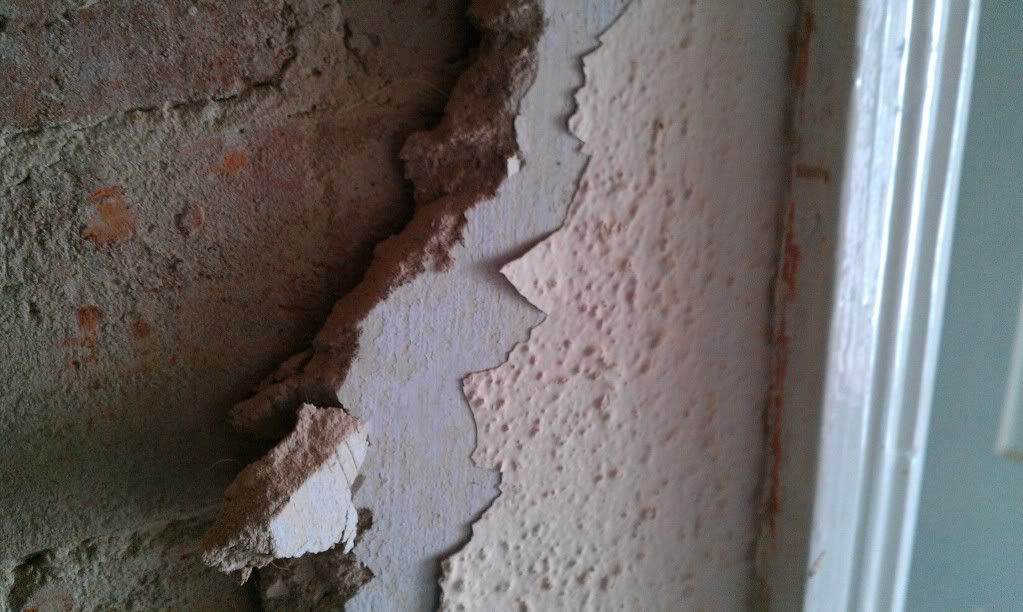Afternoon all 
My wife and I have recently moved into a mid 19th century property, and are doing our best to look after it!
What we thought would be a relatively simple task (stripping the landing and stairs, and repainting) has got a bit more tricky when I discovered that the plaster was a thin skim on some sort of textured coating.
However, I'm not sure if it's Artex or woodchip. Obviously if it's the former I need to take a lot more care because of the Asbestos risk.
It seems to come off in sections of 'sheets', and seemed a little sticky when the back was moistened on a test piece, which made me think it was woodchip. However, when I started chipping off a test corner piece by a ceiling, I wasn't so sure.
Reason is the coating is on the ceiling as well - the ceiling looks very much like Artex as the texture 'hangs' with gravity. However, the wall coating seems to run into the ceiling coating, with no discernible ceilings.
Cana nyone tell me what I'm dealing with here?
Cheers in advance!
Si
Photos:
Wall by frame:

Ceiling:

Join I'm talking about:

My wife and I have recently moved into a mid 19th century property, and are doing our best to look after it!
What we thought would be a relatively simple task (stripping the landing and stairs, and repainting) has got a bit more tricky when I discovered that the plaster was a thin skim on some sort of textured coating.
However, I'm not sure if it's Artex or woodchip. Obviously if it's the former I need to take a lot more care because of the Asbestos risk.
It seems to come off in sections of 'sheets', and seemed a little sticky when the back was moistened on a test piece, which made me think it was woodchip. However, when I started chipping off a test corner piece by a ceiling, I wasn't so sure.
Reason is the coating is on the ceiling as well - the ceiling looks very much like Artex as the texture 'hangs' with gravity. However, the wall coating seems to run into the ceiling coating, with no discernible ceilings.
Cana nyone tell me what I'm dealing with here?
Cheers in advance!
Si
Photos:
Wall by frame:

Ceiling:

Join I'm talking about:


